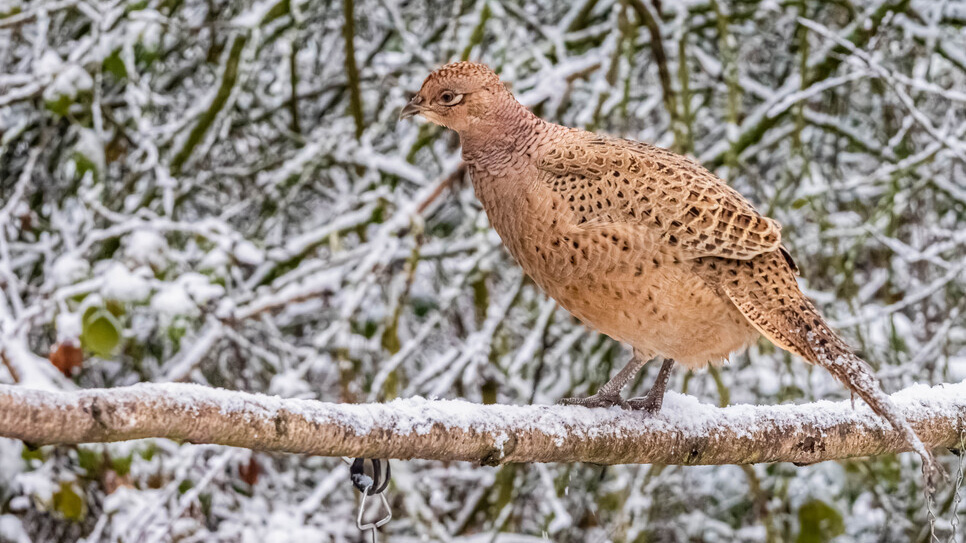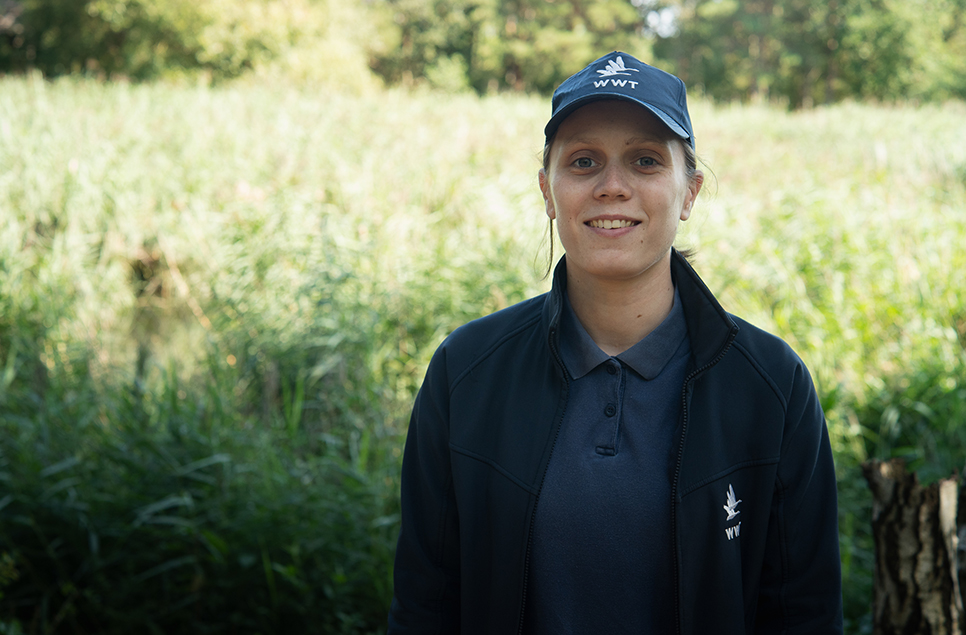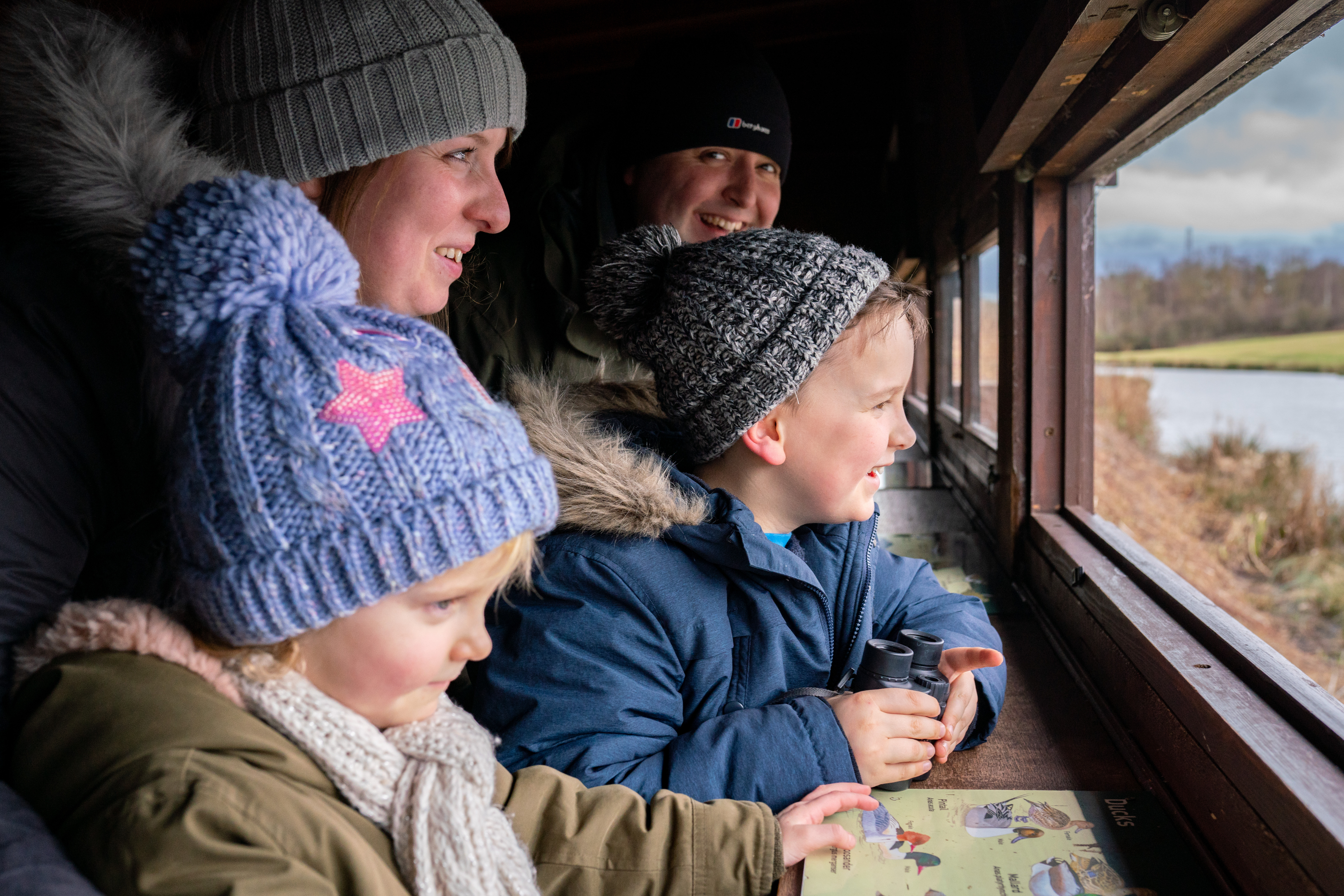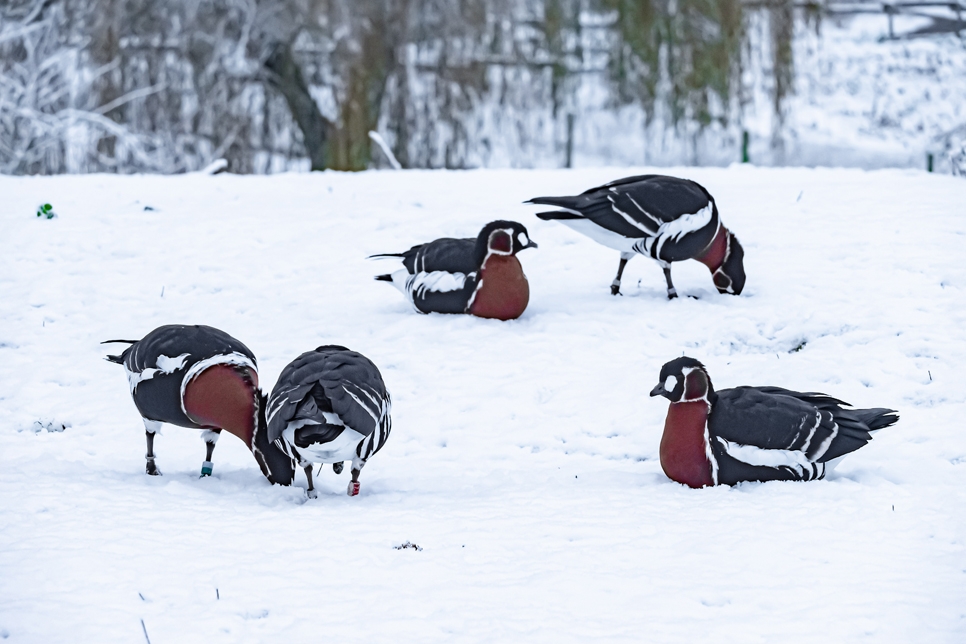Spotting dragons and damsels
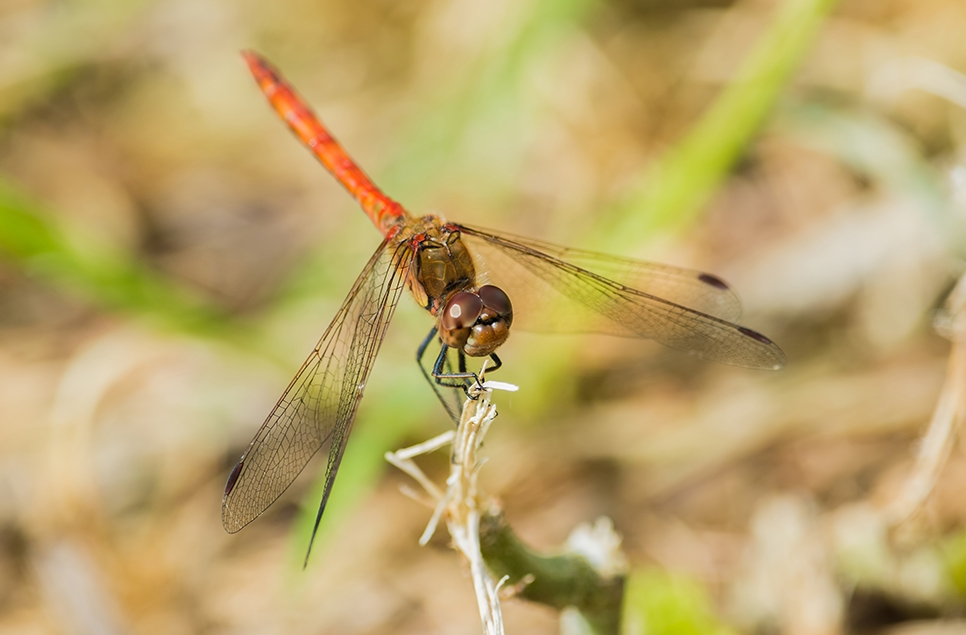
Prehistoric creatures fly free on our wild reserve. They're fearless. They're top predators. And they're a key indicator of a healthy ecosystem. What are they? Well, they are dragonflies and damselflies of course!
During the summer here at WWT Washington Wetland Centre, a variety of up to twenty species in all sizes and colours call our amphibian ponds and surrounding wetlands their home.
The fun doesn't stop when summer ends though, they also breed here, laying their eggs under the surface protected by plant roots, leaves and other foliage. The next generation of dragonflies and damselflies overwinter in ponds and lakes, going through up to 14 moulting stages before climbing up grasses and reeds in spring for their final moult, knows as 'emergence'.
Is it a dragonfly or a damselfly?
Once you get the knack, it's quite easy to tell your dragonflies from your damselflies. Our amphibian ponds have some lovely new information boards to help you, and if you've picked up a spotter guide, well, you're onto a winner! But if you need a little more help, here's a quick guide...
Dragonflies are usually bigger, with much thicker bodies. They are much quicker in flight and do that famous 'darting' around the waters surface. They have HUGE eyes that take up most of their head. But the tell-tale sign is when they're resting - if you spot one, take a look at the way it holds its wings. If they're held out wide from its body, it's a dragonfly!
Damselflies have much thinner bodies. They're a little more delicate in the way they fly, often gently hovering around plants before landing. Their heads are a more rectangular shape with eyes placed on either side. Again take a look at them when rested and see the way they hold their wings - damselflies are more discreet, tucking them along the length of their body.
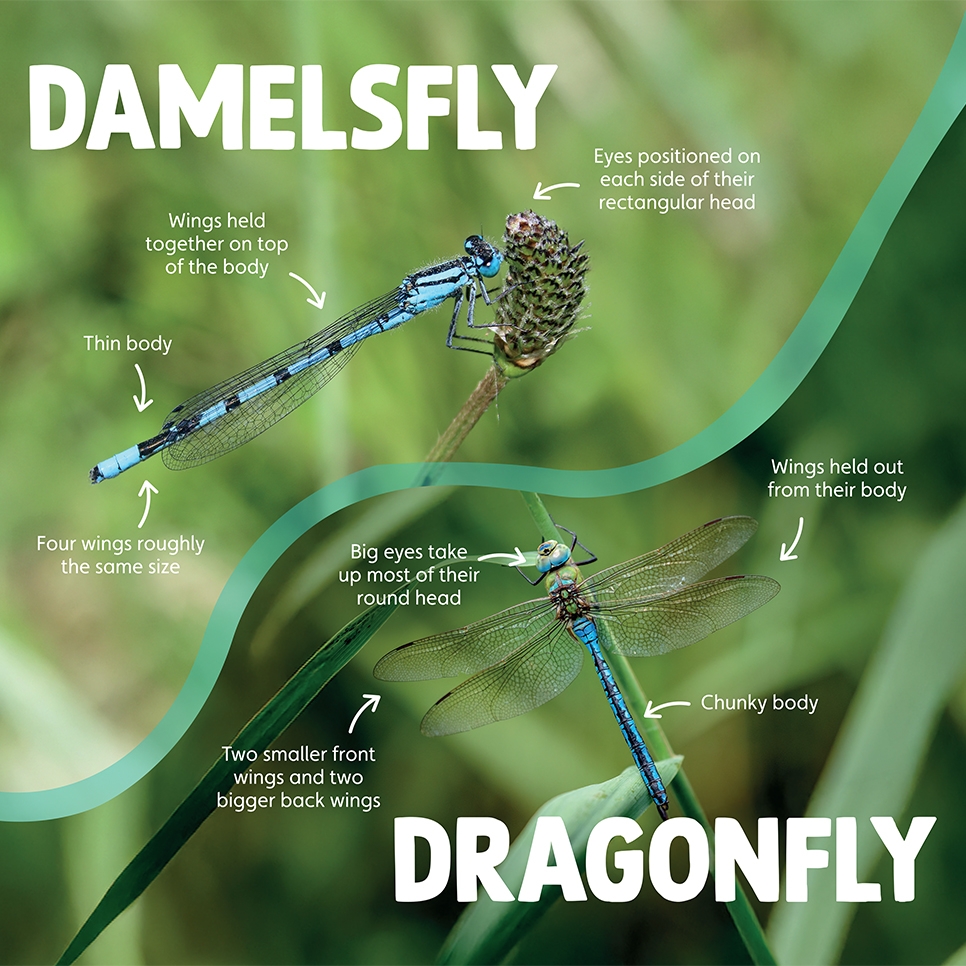
Key species to find
We mentioned earlier that there are around twenty species of dragonfly and damselfly that are spotted on our reserve regularly, with some more rare visitors. Here's a few to keep an eye out for...
Broad-bodied chaser
We don't like to judge things by their size, but these dragonflies are known as the ‘fat’ dragonfly for their very broad bodies. Males have a blue abdomen with yellow spots on the side (pictured below), while females and immature males are golden-brown in colour with paler spots on the sides.
They are quite common around our amphibian ponds from mid-spring, with males often seen chasing each other and mid-air battling!

Four-spotted chaser
Mostly brown in colour with a darker tail, four-spotted chaser dragonflies have two obvious dark spots on each wing. Male and females look very similar so it's tricky to spot the differnce! is quite active in late spring and summer.
Again, another common sightings around our amphibian ponds, active from late spring and throughout the summer.
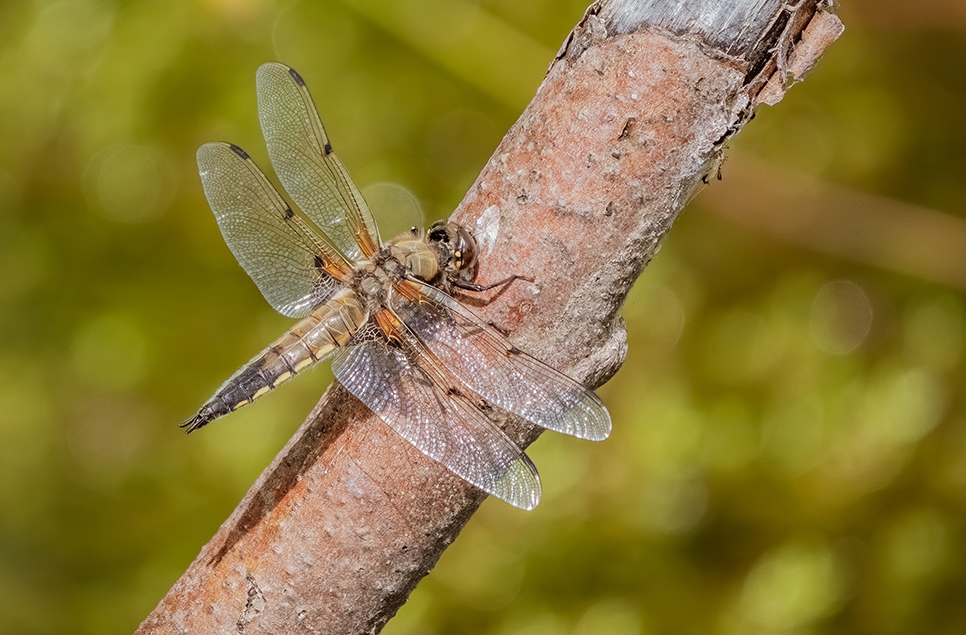
Common darter
The common darter dragonfly is probably the most common species of darter. Males can vary in colour from a dull to bright orange-red, especially on the upper surface of the abdomen. While females are a yellow-browny colour becoming duller/reddish with age.
They are abundant throughout the UK with a long flying season from June to November! They're regularly seen around our amphibian ponds but can often be seen around our stream channel, meadows and other pond areas.
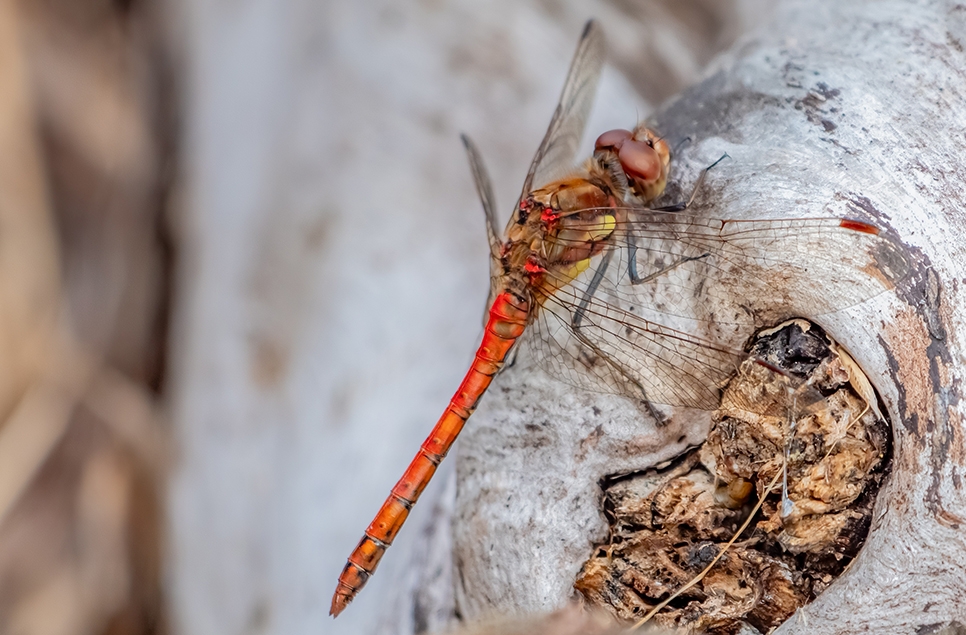
Azure damselfly
The most common dragonfly to visit our amphibian ponds, and widespread throughout the UK. Males are blue and if you manage to see one close enough, a black ‘U’ shaped marking below the base of the wings. Females are green and black.
Look out for these damselflies mating, twisting their bodies together before the females oviposit into or near water, while the males stand tall to protect the female from other males.
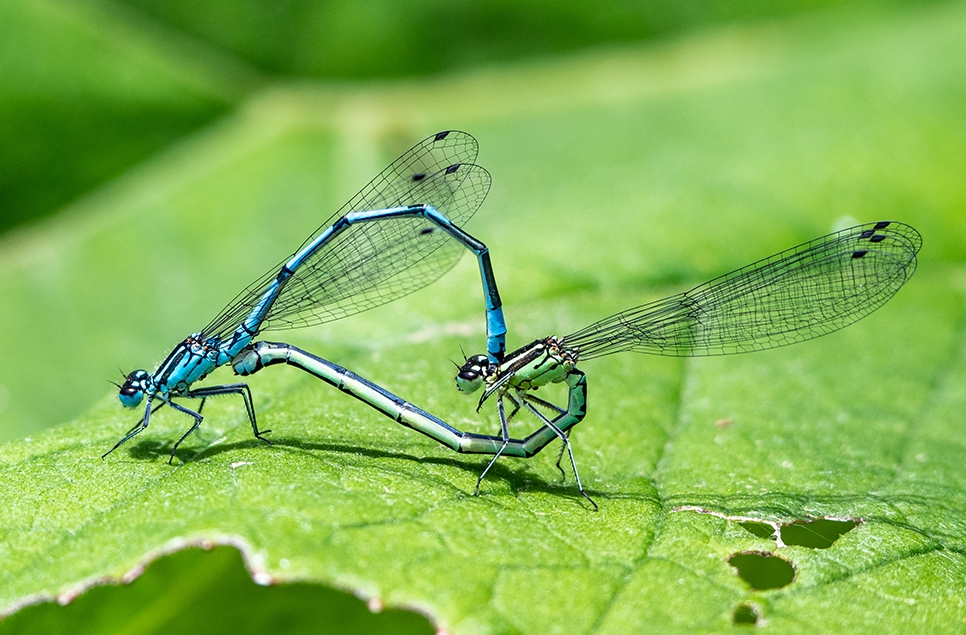
Large red damselfly
These are the most common red damselfly around our wetlands. They are widespread throughout the UK. Males are red and black in colour, while females are also red and black but with the addition of some yellow markings.
Look around our ponds and nearby reedbeds. These damselflies don't like fast flowing water!
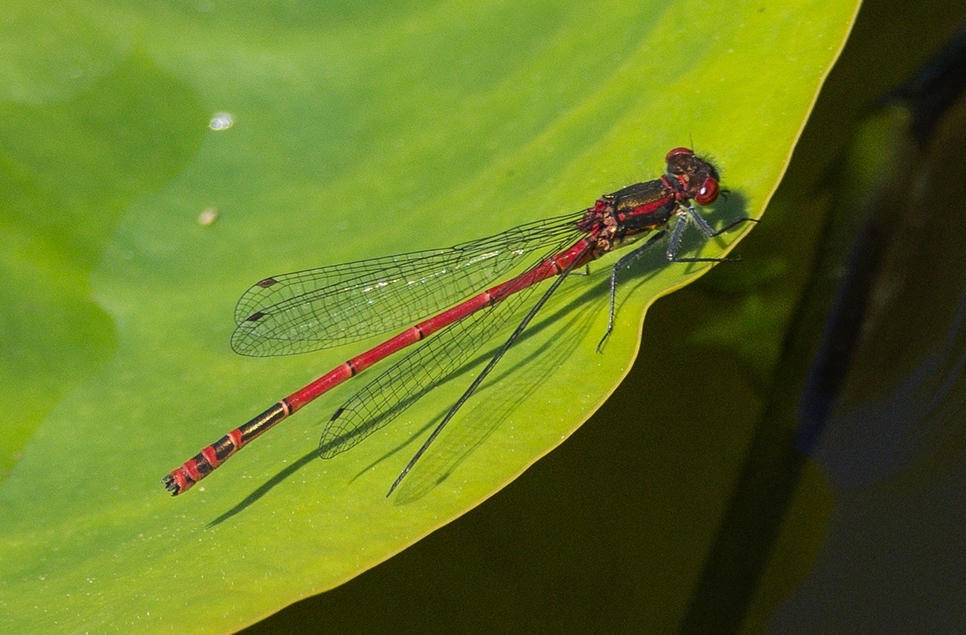
Banded demoiselle damselfly
These damselflies are a little bit fancy! They are a large metallic-looking damselfly with fluttering, butterfly-like wings. Males are metallic blue with broad dark blue-black spots across outer parts of wings. Females have metallic green bodies with translucent pale green wings.
Once rare in the north, they are steadily spreading their range and are being spotted more often around our wetlands. Last year, most activity was around the wildflowers of Forgotten Meadow (near Hawthorn Wood hide).
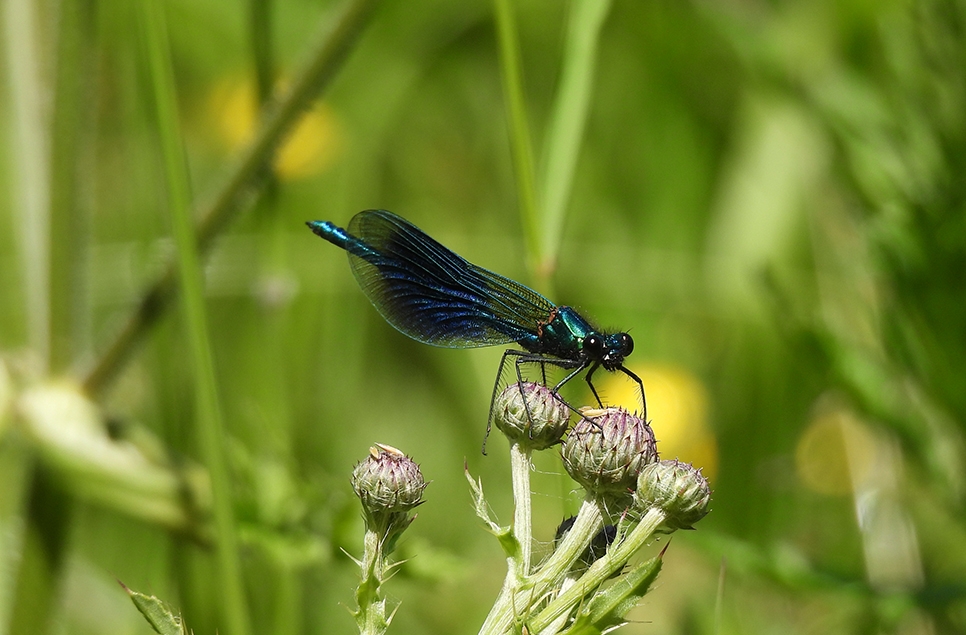
As part of our Dragonfly Festival this summer, we'll be doing some warden-led Dragonfly Safari Wild Walks where our team will take you around our wetlands looking out for dragonflies and damselflies. It's a great opportunity to spend time with our reserve team and absorb every ounce of knowledge they share.
If you just can't wait to go on a dragonfly safari with our team, why not pick up a spotter guide from the visitor centre and take the family to do some dragonfly and damselfly spotting of your own on a self-led Dragonfly Safari around our amphibian ponds. We'd love to hear what you find!
Fancy more dragonfly-themed adventures?
If you've been inspired to take part in our Dragonfly Festival and explore Washington Wetland Centre this summer, find out more and see what's on.
Find out more